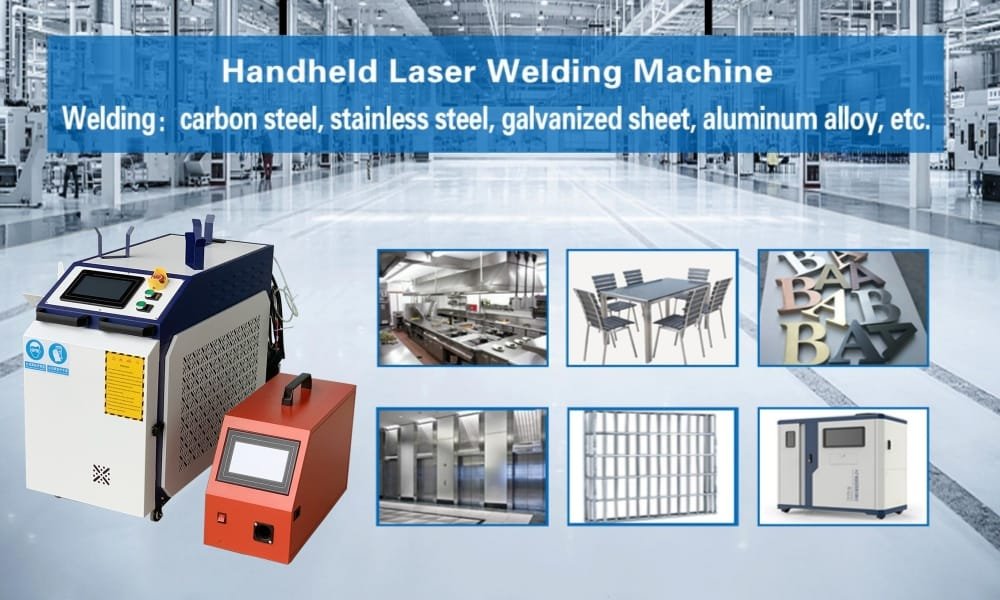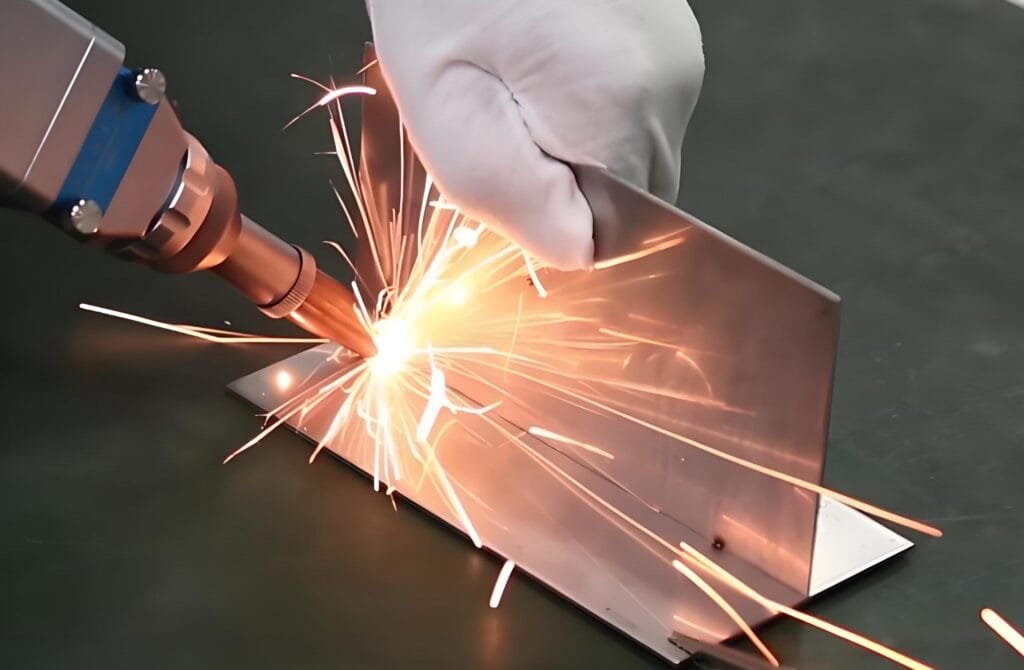
The handheld laser welding machine is a tool that combines traditional welding technology with modern laser technology. It accurately locates the welding point by generating a high-intensity laser beam to complete the connection of metal materials. Compared with traditional arc welding, the handheld laser welding machine not only improves work efficiency, but also greatly reduces defects in the welding process. It is suitable for precision welding of various metals. For beginners, the handheld laser welding machine is a very suitable tool. First of all, its operation interface is intuitive and easy to understand, without complicated settings, and novices can quickly get started. Secondly, the welding process of the handheld laser welding machine does not require complicated technical operations. Even people without professional backgrounds can complete high-quality welding work through simple practice.
Furthermore, the handheld laser welding machine is small in size, suitable for flexible on-site operation, and can easily cope with various welding occasions. It is not only suitable for small businesses or home studios, but also suitable for enthusiasts to carry out DIY projects. In general, the handheld laser welding machine provides an ideal welding tool platform for beginners with its high efficiency, precision and simplicity.
Beginner-friendly welding equipment – Why handheld laser welding machines are easy to operate
Handheld laser welding machines are welding tools designed for novices and beginners. Their use process is simple and intuitive, allowing even inexperienced users to quickly get started. First of all, the handheld laser welding machine has a light structure and moderate weight, so it is not easy to feel hand fatigue when using it. The humanized design allows the operator to operate flexibly in different working environments and complete a variety of welding tasks. The machine is equipped with a simple display interface, and all welding parameters (such as power, laser beam width, etc.) can be adjusted with simple buttons without complicated operating steps.
In addition, the intelligent design of the equipment makes the welding process more stable, and users can focus on welding without worrying about too many adjustments. Compared with traditional welding equipment, handheld laser welding machines are more intuitive and easy to understand, and are very suitable for novices with zero basics. Whether it is home repairs or simple metal welding work, handheld laser welding machines can provide a simple and efficient operation experience, helping novices quickly master welding technology.
Handheld laser welding machine usage tips: essential operating steps for novices
Prepare materials
- Material preparation is a critical step before using a handheld laser welder each time. First, make sure all metal surfaces to be welded are completely clean, removing grease, oxide layers and impurities on the surface. For irregular surfaces or thicker metals, a wire brush or sandpaper can be used to polish to ensure a smooth surface. Cleaned materials will ensure a strong, flawless weld joint and reduce the probability of unsuccessful welding.
Set up the machine
- When setting up a laser welder, users need to adjust the machine parameters according to the requirements of different materials and thicknesses. Turn on the device and enter the main interface to set basic parameters such as laser power, frequency, laser beam width, and welding speed. For novices, many handheld laser welders offer an automatic adjustment function that automatically selects the best welding mode based on the type of material. After setting up, ensure that the laser head is positioned correctly and the alignment of the welding area is correct to avoid deviations.
Basic welding steps and operating tips
- When starting welding, first aim the welder at the welding point, making sure to hold the handle steadily and maintain an appropriate angle. Maintaining a steady operating speed is key, and avoid operating too fast or too slow, as this will affect the quality of the welded joint. During the welding process, pay attention to whether the laser beam is continuous and stable and whether the weld joint is uniform. If any deviation occurs, the machine settings or welding angles should be adjusted immediately. After completing the welding, pay attention to the cooling process of the weld joint to ensure the strength and stability of the weld.

How to avoid common mistakes in using handheld laser welding machines
Common Mistakes
- When using handheld laser welding machines, some novices may ignore the details of equipment adjustment and operation, leading to problems. For example, improper machine parameter settings, too much or too little power, may lead to uneven or loose welds. In addition, inconsistent moving speeds during operation will also lead to poor welding quality. Too fast speeds may cause the weld to fail to fully fuse, and too slow speeds may cause the welding area to overheat and cause unnecessary damage. Another common mistake is insufficient material preparation, oil or oxide on the surface during welding, which affects the welding effect.
Solutions and Precautions
- To avoid improper power settings, it is recommended to select the appropriate welding mode according to the type, thickness and requirements of the welding material. Many modern handheld laser welding machines are equipped with automatic adjustment functions, which can intelligently adjust the power and welding speed to reduce human errors. Keep your hands steady during operation and avoid moving the welding machine too fast or too slow to ensure the uniformity and firmness of the welded joint. At the same time, the preparation of welding materials is very important. Make sure the surface is clean and free of pollution. Use a wire brush or cleaner to thoroughly remove impurities such as oil and rust to ensure smooth welding.
How to use laser welding machine for creative applications
Practical Applications
Handheld laser welders provide beginners with an excellent opportunity to be creative and perform a variety of small welding tasks. For those users who have a passion for creation, laser welders are ideal tools for DIY projects. For example, making metal art, customizing metal jewelry, repairing household items, and even performing small repairs on car and motorcycle parts can all be accomplished with this tool. Beginners can try welding simple structures such as metal racks, tool repairs, etc., or they can challenge more creative projects such as welding unique sculptures or artworks. In these projects, the precise control and ease of operation of handheld laser welders make them a perfect choice.
Encourage Experimentation and Skill Improvement
For novices, the most important part is to dare to experiment. Handheld laser welders can not only help complete repair work, but also become a tool to exercise skills and stimulate creativity. Beginners can improve their understanding of the welding process through continuous practice. Whether it is welding irregularly shaped metals or performing multi-angle repair tasks, users can improve their welding skills in practice. Through these practical operations, gradually understand the characteristics of different materials and welding methods, and eventually master more advanced skills. Encourage novices to try to combine daily repair tasks with creativity to create unique welding works.


